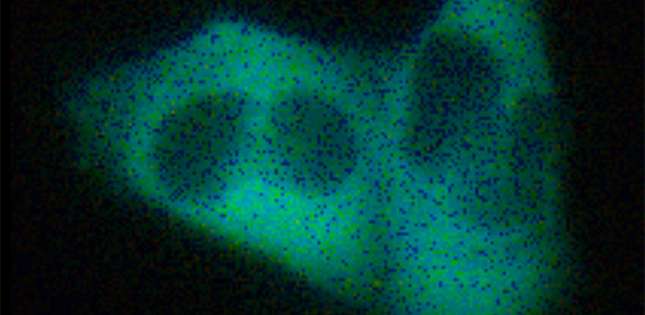A new sensor to detect physiological levels of nitrate and nitrite

A team led by Professor Takafumi Uchida has created a new technique for visualizing the dynamics of nitrate (NO3-) and nitrite (NO2−), both markers of nitric oxide in a cell. Nitric oxide is a critical second messenger in the body, playing roles in vascular homeostasis, neurotransmission and host defense.
The new technology is called sNOOOpy which stands for "sensor for NO3-/NO2− in physiology." sNOOOpy is a genetically encoded intermolecular fluorescence resonance energy transfer (FRET)-based indicator that senses levels of nitrate and nitrite. sNOOOpy utilizes the NO3-/NO2—responsive two-component system of NasS and NasT system in the root nodule bacterium Bradyhizobium japonicum.
The researchers demonstrated with in vitro and cell culture studies that sNOOOpy can monitor intracellular levels in the micromolar range of nitrate and nitrite in real time. The authors say, "sNOOOpy is simple and potentially applicable to a wide variety of living cells. It is expected to provide insights into NO3−/NO2− dynamics in various organisms, including plants and animals." They also believe sNOOOpy will be useful for discovering new drugs and agricultural research.
This research was originally published in the Journal of Biological Chemistry.

More information: Visualization of NO3−/NO2− Dynamics in Living cells by Fluorescence Resonance Energy Transfer (FRET) Imaging Employing a Rhizobial Two-Component Regulatory System. Journal: Journal of Biological Chemistry , DOI: jbc.M115.687632
Journal information: Journal of Biological Chemistry
Provided by Tohoku University


















